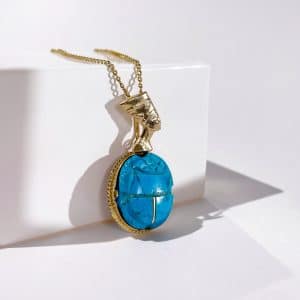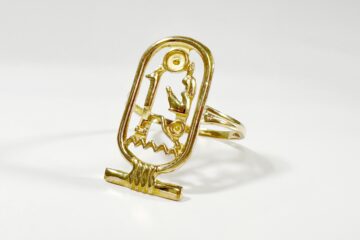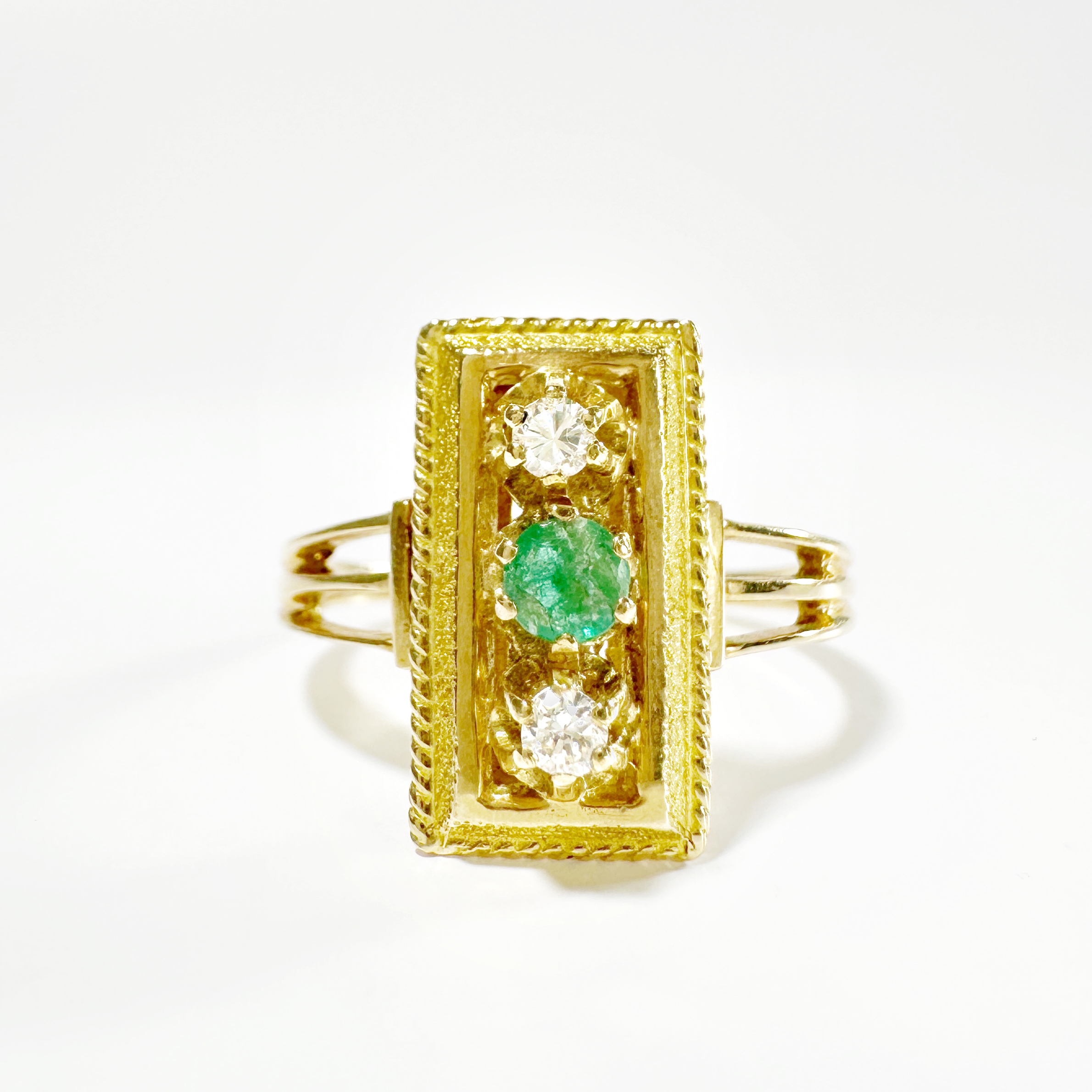If you follow the finds of ÓNÍSÌ PARIS regularly, you will find that Egyptian jewelry is regularly honored. One symbolic motif in particular is very recurrent: the sacred beetle. This fascinating insect has captured the imagination of the Egyptian people since ancient times, and it has been closely associated with one of the main deities.
What is the meaning of the sacred beetle ?
Certain aspects of the beetle’s behavior were equated with the attributes of the sun god, giving the iridescent insect divine importance within ancient Egypt. It was ubiquitous in the daily lives of the inhabitants, inspiring the creation of common objects, sometimes even integrated into the sarcophagi of high-ranking individuals. Initially a mystery to an enigmatic civilization, the place of the scarab beetle within the society of the pharaohs has since been the subject of much research.
 What is the connection between the sun and the beetle?
What is the connection between the sun and the beetle?
To further explore the significance of the scarab in ancient Egypt, we need to take a closer look at its connection to the sun god, Ra, due to its shape and behavior. The shape of the insect’s head, reminiscent of a semicircle, reminded the Egyptian people of the rising sun, a symbol of regeneration and perpetual renewal. In addition, its ability to metamorphose shapeless excrement into a regular, sun-like ball reinforced its association with the sacred star, a symbol of order and purity.
Is the beetle a good luck charm?
This association of the beetle with the sun led to its depiction in the form of lucky amulets. Archaeological discoveries even reveal that sculptures or amulets in the shape of a scarab beetle were placed at the level of the hearts of the deceased, for ritual reasons.
What are the other symbolic objects of ancient Egypt?
Moreover, the significance of the scarab beetle in ancient Egypt is only one aspect of the understanding of that civilization. Other symbols, such as the Ankh cross (or cross of the Nile), the Djed, and the Ouas scepter, also play a crucial role in Egyptian beliefs, reflecting a culture that is deeply spiritual and rich in symbols.
In conclusion, the scarab was not only a symbol of good luck and protection in ancient Egypt, but also a tangible link to the divine, embodying rebirth and regeneration. Its importance transcends time, and even today it is revered in some cultures as a good luck charm, reminiscent of ancient Egyptian beliefs and traditions.
 en
en
 Français
Français





